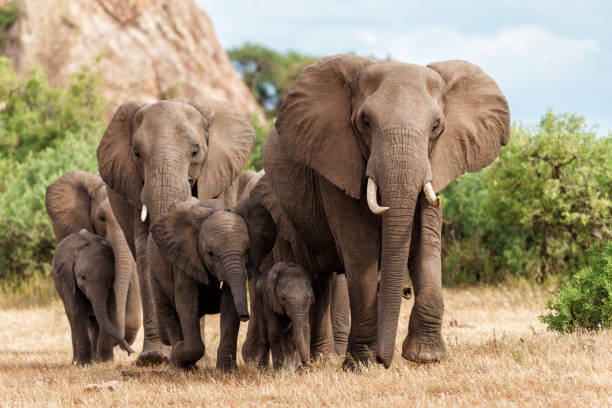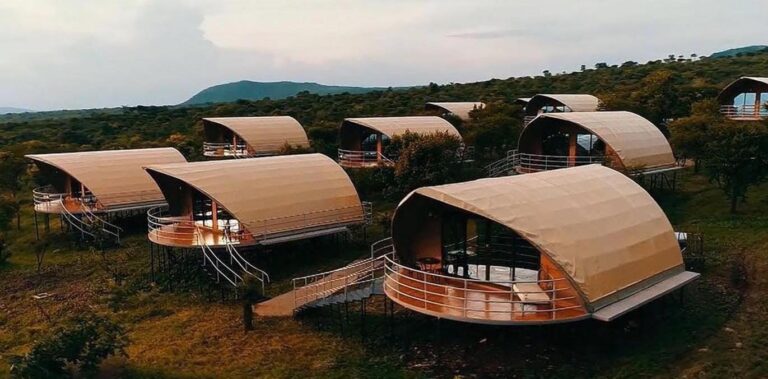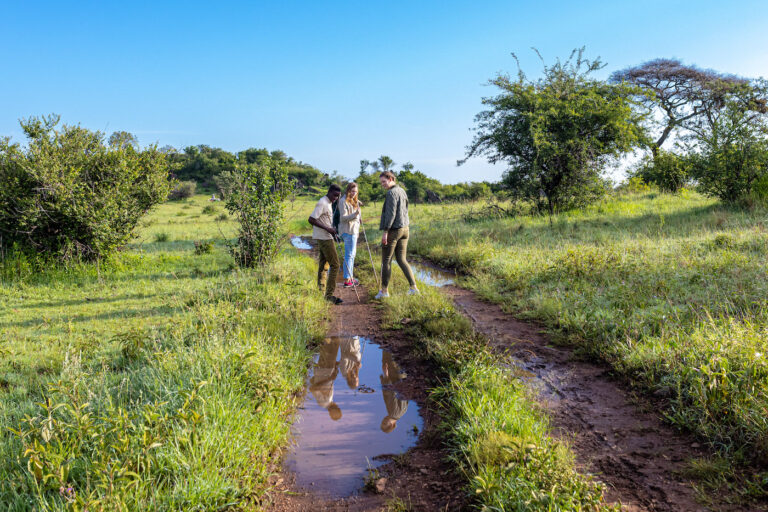Tarangire National Park Guide: Elephant Herds and Unique Safari Camp Stays in Tanzania
Often called the home of elephants, Tarangire National Park stands out among Tanzania’s 22 protected areas as a haven for massive herds—up to 300 strong during the dry season—roaming beneath ancient baobab trees.
In this comprehensive guide, we’ll explore Tarangire’s wildlife wonders, focusing on the iconic elephant herds, essential activities, the best time to visit, costs, and sample itineraries. We’ll also spotlight post-safari stays at our partner properties: Highview Hotel Tarangire and Highview Coffee Lodge, perfect for unwinding after your adventure with stunning views, cultural immersion, and top-tier amenities. Whether you’re planning a family escape or a romantic luxury safari, Tarangire delivers the authentic East African magic. Let’s dive in and plan your unforgettable Tarangire National Park safari!
Overview of Tarangire National Park: Tanzania's Elephant Paradise

Nestled in northern Tanzania’s Arusha Region, Tarangire National Park spans 2,850 square kilometers of diverse landscapes, from acacia-dotted savannahs to seasonal swamps and the life-giving Tarangire River. Established in 1970, it’s a key part of the Northern Circuit, just 118 kilometers from Arusha—making it an easy 2-hour drive or 45-minute flight from Kilimanjaro International Airport. Unlike the vast Serengeti, Tarangire feels intimate, with winding game tracks that lead to hidden waterholes teeming with life.
What sets Tarangire apart? Its seasonal river attracts massive wildlife concentrations during the dry months (June–October), turning it into a mini-Serengeti. The park’s iconic baobab trees, sometimes called upside-down trees, can live 3,000 years and create a dramatic skyline, while groundwater forests harbor unique flora like the fever tree. Recognized as a biodiversity hotspot, Tarangire supports over 3,000 elephants, 550 bird species, and 40 large mammals, making it a must for photographers and nature lovers. Our Tarangire safaris emphasize eco-friendly exploration, supporting conservation efforts to protect this vital corridor for migratory herds.
For those seeking unique safari camps Tanzania vibes, Tarangire’s seclusion allows for private, off-the-grid experiences—think sunrise game drives followed by bush breakfasts.
Elephant Herds: The Park's Majestic Stars

No Tarangire safari is complete without witnessing the elephant herds—the park’s undisputed icons. Home to Tanzania’s largest elephant population (over 3,000 individuals), Tarangire sees dramatic migrations during the dry season, when families of 200–300 elephants converge on the river for water and acacia pods. These gentle giants, some reaching 4 meters at the shoulder, traverse the savannah in matriarch-led groups, offering heart-stopping close encounters from your safari vehicle.
Elephant behavior here is mesmerizing: calves playfully trunk-wrestle or herds dust-bathe under baobabs to fend off insects. During peak dry months (July–September), the riverbanks become elephant cities, with up to 500 individuals at once—a sight rivaling Amboseli but with fewer tourists. Conservation is key; poaching reduced herds from 6,000 in the 1970s, but efforts by the Tanzania National Parks Authority have rebounded numbers, thanks to anti-poaching patrols.
On our Tarangire safaris, expert guides spot herds from elevated viewpoints like Silale Swamp, sharing facts like elephants’ 200-liter daily water needs. For deeper immersion, opt for guided walking safaris, where you track fresh spoor and learn about human-elephant coexistence. Night drives also give you the chance to spot nocturnal grazers under starry skies.
Beyond Elephants: Wildlife, Birds, and Activities in Tarangire
While elephants steal the show, Tarangire’s biodiversity rivals any Tanzania safari. The Big Five (lion, leopard, elephant, buffalo, rhino) are all present, with lions often perched on kopjes and leopards in riverine forests. Zebras, wildebeest, and giraffes form mini-migrations (up to 400,000 animals June–October), while hippos and crocodiles lurk in swamps. Oryx, eland, and gerenuk antelopes add rarity, and over 550 birds—including lilac-breasted rollers and secretary birds—flock to the acacias.
Activities to enjoy in Tarangire:
- Game Drives: Dawn and dusk for peak sightings; full-day with picnic lunch.
- Walking Safaris: 2–3 hour guided hikes to explore termite mounds and tracks.
- Night Drives: Spot nocturnal owls and genets.
- Birdwatching: Hotspots like the picnic site near the gate, with 300+ species year-round.
Best Time to Visit Tarangire National Park
Timing your safari maximizes elephant sightings:
- Dry Season (June–October): Peak elephant concentrations, clear views, 20–30°C days. High season prices, but worth it for migrations.
- Wet Season (November–May): Lush greenery, bird bonanza (flamingos Dec–Feb), fewer crowds, 15–25% lower safari prices.
Unique Safari Camps: Highview Hotel and Highview Coffee Lodge
After an exhilarating safari, unwind at our recommended stays: Highview Hotel Tarangire and Highview Coffee Lodge, both in Karatu (30–45 minutes from Tarangire). These elevated retreats offer panoramic views over coffee farms and hills, blending luxury with cultural immersion—perfect for reflecting on elephant sightings.
Perched 1,800 meters above sea level, Highview Hotel features 41 spacious ensuite rooms with hill views. Guests enjoy the infinity pool, Swahili fusion cuisine, sauna, and guided Bushmen tours. It’s ideal for families or couples and is just 20 minutes from Ngorongoro Crater.
For a more intimate vibe, Highview Coffee Lodge offers 8–12 cottages amid working coffee estates. Guests can enjoy coffee tours, spa treatments, cultural activities, and farm-to-table meals. With private balconies and tranquil surroundings, it’s perfect for those seeking authentic safari camp stays near Lake Manyara.
Both properties offer affordable packages that combine Tarangire safaris with extended stays.
Essential Tips for Your Tarangire Safari
- Fitness: Easy walks; comfortable shoes for game drives.
- Packing: Binoculars, camera, neutral clothes, sunscreen.
- Health: Malaria prophylaxis and bottled water recommended.
- Sustainability: No plastic; support anti-poaching through park fees and tips.
- Getting There: Fly to Arusha; transfers are included.
Tarangire National Park safaris reveal unforgettable elephant herds and unique safari camp experiences like Highview Hotel and Highview Coffee Lodge, proving it’s one of Tanzania’s most underrated parks.























